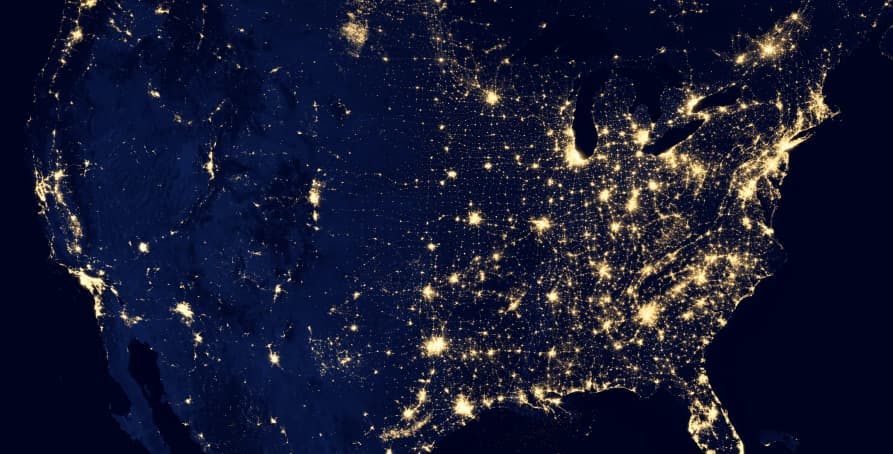
What are the 3 Pillars of Corporate Sustainability?
In this article, we'll explore what the 3 pillars of corporate responsibility are, why they're important, and how businesses can turn them into practical action.
ESG / CSR
Industries



Climate change represents a clear example of global injustice, with rich nations bearing a disproportionate responsibility for global emissions. These countries have enjoyed the benefits of industrialization, while developing countries, contributing far less to these emissions, disproportionately face the severe impacts of climate change. This disparity is also pronounced within nations, particularly in places like the US, where the richest individuals emit significantly more than their fair share.
👉 In this article we examine the deep-seated correlation between wealth and emissions, shedding light on the unequal distribution of environmental impacts.
harsh reality is that while climate change affects everyone, it does so indiscriminately, disproportionately impacting those least responsible for it. Developing nations, which have contributed minimally to global emissions, are often the most vulnerable to climate-related disasters like droughts, floods, and hurricanes. This inequity is a stark reminder of the global imbalance in wealth and environmental responsibility.
Wealth distribution across the globe tells a tale of this imbalance. The more developed and wealthier nations have historically contributed the most to greenhouse gas emissions through industrial activities and high-consumption lifestyles. However, this doesn’t paint the whole picture; data not only highlights the disproportionate contribution of wealthier nations to global emissions but also underscores the varying degrees of responsibility within these nations. It reflects a world where the affluent, benefiting from high-emission lifestyles, exacerbate the climate crisis, often hitting the poorest and least responsible the hardest.
Recent studies have highlighted that even within developed nations, the wealthiest individuals are responsible for a significantly higher proportion of carbon emissions compared to the rest of the population. For example, in the United States, the richest 10% contribute to about 40% of the country's total carbon emissions. This trend is not isolated to the US; similar patterns are observed in other developed nations.
The reasons for this are varied, rooted in the lifestyle choices and consumption patterns that are more prevalent among the wealthy. Larger homes require more energy for heating and cooling, and wealthier individuals tend to own multiple vehicles, often with higher emissions. Additionally, luxury items and high-consumption habits, like frequent air travel for business or leisure, further amplify their carbon footprint.
Let’s take a closer look at the correlation between emissions and wealth:
The disproportionate emissions of the wealthy are primarily driven by their consumption choices. Wealth affords the ability to consume more: from high-end electronics to luxury vehicles to designer clothing and exotic vacations. Each of these choices has a carbon cost associated with it.
For example, those with more wealth are more likely to fly in business or first class where emissions are between 3 and 6 times higher than flying in economy. They’re also more likely to eat meat and imported foods - two factors that contribute to higher emissions. Wealth also affords larger homes, often filled with multiple electronic devices and appliances that add to their overall environmental impact. These lifestyle choices, enabled by wealth, result in a carbon footprint that vastly exceeds that of the average citizen.
👉 The world’s richest 1% create double the carbon emissions of the poorest 50%! This means that the global carbon budget has been squandered expanding the consumption of the wealthy instead of improving the living standards of humanity.
The investment choices of the wealthy also play a crucial role in shaping carbon emissions. Wealthy individuals often have significant investments in industries that are carbon-intensive, such as fossil fuels, manufacturing, and construction. These investments not only generate considerable personal wealth but also contribute indirectly to global emissions.
Additionally, the companies and industries led by or associated with wealthy individuals may prioritize profit over sustainability, which perpetuates practices that are detrimental to the environment. The influence of the wealthy in these sectors means that their decisions and preferences can have a far-reaching impact on national and global emission levels. Therefore, addressing the environmental footprint of the wealthy isn't just about changing personal habits but also about transforming the industrial and investment practices that contribute to their disproportionate emissions.
👉 To discover why climate change is also fuelling inequality head over to our article.
Within the United States, the climate footprint of the wealthiest individuals is notably larger than in other income brackets, painting a clear picture of economic disparity and its environmental implications. The richest 10% of Americans (those earning an average of $233,600 annually) are responsible for a whopping 56.5 tons of carbon dioxide emissions per person per year (based on the International Energy Agency's analysis). This figure starkly contrasts with the emissions of the average American citizen who in 2022 was responsible for around 14.4 tons of carbon dioxide emissions. Emissions figures drop even further in line with declining salaries.
This disparity within the U.S. is a reflection of various factors, including lifestyle choices enabled by wealth, such as larger homes requiring more energy, frequent air travel, and the use of multiple, often less efficient, vehicles. The economic structure and societal norms in the U.S. further exacerbate this disparity, with wealthier individuals enjoying access to and consumption of resources that vastly outweigh their proportion in the population.
👉 To understand why consumerism is so harmful to the environment, why not take a look at our article on the topic.

The contrast in carbon emissions between the wealthiest individuals in the United States and those in other major economies is also striking. While the richest 10% of Americans emit an average of 56.5 tons of CO2 per person per year, their counterparts in regions like the European Union, China, and India have significantly lower footprints. For example, the carbon emissions of the wealthiest in Europe are less than half of those of the richest Americans. Similarly, the emissions of the wealthiest in China and India are also considerably lower, nearly half of the American figures.
This discrepancy can be attributed to several factors. In the United States, the lifestyle of the wealthy often includes elements that contribute to high carbon emissions, such as larger homes that require more energy for heating and cooling, the widespread use of air conditioning, a preference for larger, less fuel-efficient vehicles, long commutes, and frequent intra-country air travel. Additionally, the U.S. has a higher reliance on carbon-intensive energy sources compared to many European countries, which have made more significant strides in transitioning to renewable energy sources.
In contrast, the wealthier classes in the European Union benefit from a more robust public transportation infrastructure, more widespread energy-efficient practices, and generally smaller living spaces, all contributing to their smaller carbon footprints. Similarly, in China and India, despite rapid economic growth, the carbon footprints of the wealthiest are kept in check by a combination of factors, including different lifestyle choices, emerging environmental awareness, and national policies focused on sustainable development.
These differences highlight how national policies, cultural attitudes, and the availability of sustainable options play crucial roles in shaping the environmental impact of the wealthy. They underscore the need for tailored approaches in different countries to address the emissions of the affluent effectively. The American case, in particular, calls for a significant shift in both individual lifestyles and broader policy frameworks to reduce the disproportionate carbon footprint of its wealthiest citizens.
👉 Check out our article on carbon emissions to understand which sectors produce the most.
The stark reality that a small number of wealthy individuals in countries like the United States are responsible for a disproportionately large share of carbon emissions brings to light a critical opportunity: these individuals have the opportunity to make a substantial impact on climate change.
Since their lifestyle choices and consumption patterns contribute significantly to their high carbon footprints, changes in these areas could lead to notable reductions in emissions. For instance, if the wealthiest Americans were to adopt more sustainable practices, such as using renewable energy sources, opting for electric vehicles, reducing air travel, and supporting sustainable businesses, the cumulative effect on the country’s carbon emissions could be significant.
Moreover, the influence of the wealthy extends beyond their personal choices. Their investments and business decisions can have far-reaching implications for environmental policy and practice. By directing investments towards green technologies and sustainable ventures, the affluent can drive innovation and market shifts towards cleaner, more sustainable options.
This influence, combined with their substantial social and political sway, positions the wealthy not just as significant contributors to climate change, but also as pivotal players in the journey towards a more sustainable future. In essence, a relatively small group of individuals holds the potential to catalyze significant environmental progress, making their role in climate action both unique and crucial.
At Greenly we can help you to assess your company’s carbon footprint, and then give you the tools you need to cut down on emissions. Why not request a free demo with one of our experts - no obligation or commitment required.
If reading this article has inspired you to consider your company’s own carbon footprint, Greenly can help. Learn more about Greenly’s carbon management platform here.